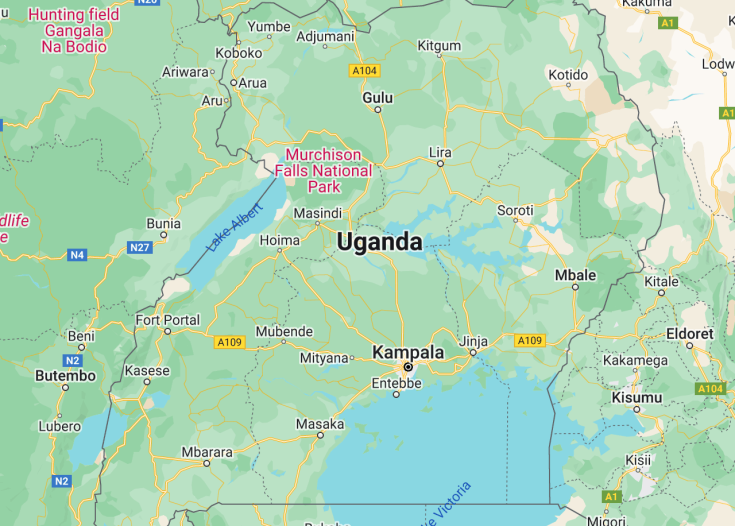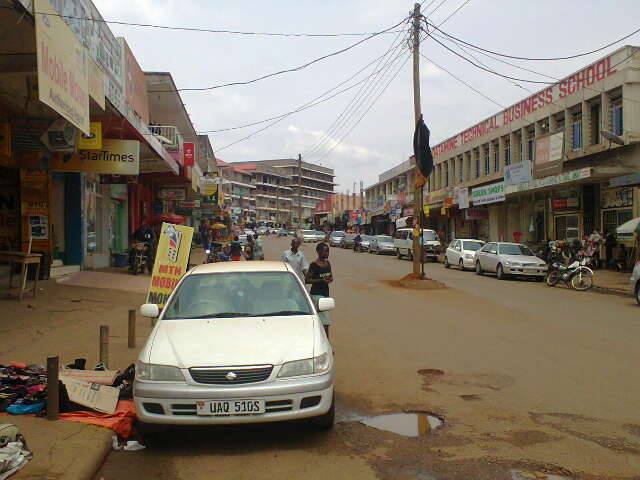Uganda, often dubbed the “Pearl of Africa”, is a landlocked nation where East African savannah converges with the West African jungle. Boasting a diverse ecosystem, from snow-capped Rwenzori Mountains to the shimmering Lake Victoria, this nation offers an unparalleled blend of wildlife experiences. Home to endangered mountain gorillas, scenic national parks, and rich cultural heritage, Uganda promises adventures that are both wild and profound.
When trekking for gorillas, hire a local porter. They provide invaluable support and contribute to community livelihoods.
Engage with local communities; many offer cultural performances and artisanal crafts as authentic keepsakes.
Uganda: the pearl of Africa awaits
| Capital | Kampala |
| Time in Uganda | GMT+3 |
| Language spoken | English, Swahili, and multiple local languages |
| Population | Approximately 44 million (Source: World Bank) |
| Religion | Christianity (85%) Islam (12%) Indigenous beliefs and other religions (3%) |
| Currency | Ugandan shilling (UGX, USh) |
| Airports | Entebbe International Airport Kidepo Airport Arua Airport |
Uganda, often dubbed the ‘Pearl of Africa’, is a country that embodies diversity, be it in its landscapes, wildlife, or culture. Nestled in the heart of East Africa, it is where the East African savannah meets the Central African jungle, resulting in a stunning blend of terrains and ecosystems.
Historically, Uganda’s roots trace back to ancient kingdoms, each with its distinct traditions and legacies. The Bunyoro, Buganda, and Ankole kingdoms, among others, have contributed to the rich tapestry of Uganda’s cultural heritage. This historical depth adds layers of intrigue for visitors keen on understanding the nation beyond its physical beauty.
From a natural perspective, Uganda is nothing short of a paradise for wildlife enthusiasts. The country’s national parks, such as Bwindi Impenetrable Forest and Queen Elizabeth National Park, house diverse species, including the elusive mountain gorillas and tree-climbing lions. Tracking these gorillas in their natural habitat is a transformative experience, offering intimate insights into these gentle giants’ lives.
Besides its mesmerizing wildlife, Uganda is home to the source of the mighty Nile River. The river’s rapids beckon adventure seekers, making it a popular spot for white-water rafting. The serene Lake Victoria, Africa’s largest lake, adds to the country’s scenic splendor, offering both relaxation and recreation.
In essence, Uganda offers a holistic travel experience. Whether one is drawn to its vibrant cultural tapestry, its teeming wildlife, or its breathtaking landscapes, the country promises memories that last a lifetime.
Where is Uganda located?
Uganda is situated in East Africa, landlocked between countries like Kenya, Tanzania, Rwanda, South Sudan, and the Democratic Republic of the Congo.
What is Uganda famous for?
Uganda is renowned for its diverse wildlife, especially the endangered mountain gorillas in Bwindi Impenetrable Forest, its rich cultural history, and being home to the source of the Nile River.
History
Prehistoric Era: First Inhabitants
The history of Uganda dates back to the early stone age, with archaeological findings pointing to the existence of early hominins in the region. The modern ethnic groups of Uganda began arriving in the region thousands of years ago, including the Luo and the Bantu-speaking populations, who came from central and western Africa.
14th-18th Century: Emergence of Kingdoms
During these centuries, powerful kingdoms began to emerge in the region. Notably, the Buganda, Bunyoro, Toro, and Ankole kingdoms developed sophisticated political structures and distinct cultures. The Buganda Kingdom, in particular, became dominant, thanks to its strategic location and the leadership of its kabakas (kings).
19th Century: European Exploration and Arab Influence
The 19th century marked the onset of European and Arab influence. Arab traders, searching for ivory and slaves, established routes through Uganda. Simultaneously, European explorers, including John Hanning Speke and Henry Morton Stanley, ventured into the interior, laying the foundation for British colonialism. Their encounters and subsequent treaties with local leaders paved the way for European domination.
Late 19th – Early 20th Century: British Protectorate
In 1894, Uganda became a British protectorate, officially known as the Uganda Protectorate. The British administration largely relied on indirect rule, where the local kingdoms retained some autonomy under the oversight of colonial officers. This period saw significant economic changes, including the introduction of cash crops such as cotton and coffee.
Mid 20th Century: Road to Independence
Post World War II, nationalist sentiments began to rise, pushing for greater representation and ultimately, independence. In 1962, Uganda achieved its independence from Britain, with Milton Obote as the nation’s first Prime Minister. The transition was initially peaceful, but the balance of power between the central government and the traditional kingdoms, especially Buganda, became a significant point of contention.
1970s-1980s: Era of Turmoil
In 1971, General Idi Amin Dada staged a coup, overthrowing Obote and initiating a brutal regime characterized by widespread human rights abuses and economic mismanagement. His eight-year rule devastated the country. Obote returned to power in 1980, only for his second tenure to be marked by further violence and instability.
1986-Present: Museveni’s Leadership and Contemporary Uganda
In 1986, Yoweri Museveni and his National Resistance Movement (NRM) took control of the country, heralding a period of relative stability and economic growth. Museveni’s leadership has seen vast improvements in public health, infrastructure, and education. However, his lengthy rule has also been criticized for suppressing political opposition and curbing freedoms. Today, Uganda stands as a nation with a rich history and diverse cultural heritage, while still grappling with political and socio-economic challenges.
Visit Uganda
What to see and do in Uganda
Uganda offers a diverse range of attractions and activities for visitors to explore. Here are some highlights:
- Explore the stunning natural landscapes of Bwindi Impenetrable National Park and Mgahinga Gorilla National Park, home to endangered mountain gorillas.
- Embark on a safari adventure in Murchison Falls National Park, Queen Elizabeth National Park, or Kidepo Valley National Park, where you can spot a variety of wildlife including elephants, lions, giraffes, and hippos.
- Discover the rich cultural heritage of Uganda by visiting the Kingdom of Buganda in Kampala, the Kasubi Tombs, and the Uganda National Museum.
- Experience the thrill of white-water rafting on the Nile River or go hiking and mountaineering in the Rwenzori Mountains.
- Relax on the picturesque shores of Lake Victoria, the largest lake in Africa, or cruise along the Kazinga Channel to observe the abundant birdlife and wildlife.
Events in Uganda
Uganda hosts a variety of events throughout the year, offering visitors an opportunity to immerse themselves in the local culture and traditions. Here are some notable events:
- Uganda Martyrs Day (3rd June): A religious holiday commemorating the Christian martyrs who were executed between 1885 and 1887 for refusing to renounce their faith.
- Kampala City Festival (October): A vibrant cultural event showcasing traditional music, dance, crafts, and food from various regions of Uganda.
- Nyege Nyege Festival (September): An annual music and arts festival held in Jinja, featuring local and international artists across a wide range of genres.
- Gorilla Naming Ceremony (June): A unique event in Bwindi Impenetrable National Park where newly born mountain gorillas are named in a traditional ceremony.
Best time to visit Uganda
The best time to visit Uganda is during the dry seasons, which occur from December to February and from June to September. During these months, the weather is generally sunny, and wildlife viewing is at its prime. However, certain activities like gorilla trekking can be enjoyed year-round.
Is Uganda worth visiting?
Uganda is definitely worth visiting for those seeking unique wildlife encounters, diverse cultural experiences, and breathtaking natural beauty. The opportunity to trek through lush rainforests and encounter endangered mountain gorillas is a once-in-a-lifetime experience that shouldn’t be missed.
However, it is important to note that Uganda still faces challenges related to poverty, infrastructure, and corruption. Travelers should research and plan their trip carefully, ensuring they are prepared for the conditions they may encounter.
Ultimately, for those looking for an adventurous and off-the-beaten-path destination, Uganda offers a wealth of opportunities for exploration and discovery.













